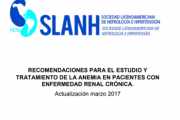Management of latent Mycobacterium tuberculosis infection: WHO guidelines for low tuberculosis burden countries
Haileyesus Getahun1 , Alberto Matteelli1 , Ibrahim Abubakar2,3, Mohamed Abdel Aziz4 , Annabel Baddeley1 , Draurio Barreira5 , Saskia Den Boon6 , Susana Marta Borroto Gutierrez7 , Judith Bruchfeld8 , Erlina Burhan9 , Solange Cavalcante10, Rolando Cedillos11,
ABSTRACT Latent tuberculosis infection (LTBI) is characterised by the presence of immune responses to previously acquired Mycobacterium tuberculosis infection without clinical evidence of active tuberculosis (TB). Here we report evidence-based guidelines from the World Health Organization for a public health approach to the management of LTBI in high risk individuals in countries with high or middle upper income and TB incidence of <100 per 100 000 per year. The guidelines strongly recommend systematic testing and treatment of LTBI in people living with HIV, adult and child contacts of pulmonary TB cases, patients initiating anti-tumour necrosis factor treatment, patients receiving dialysis, patients preparing for organ or haematological transplantation, and patients with silicosis. In prisoners, healthcare workers, immigrants from high TB burden countries, homeless persons and illicit drug users, systematic testing and treatment of LTBI is conditionally recommended, according to TB epidemiology and resource availability. Either commercial interferon-gamma release assays or Mantoux tuberculin skin testing could be used to test for LTBI. Chest radiography should be performed before LTBI treatment to rule out active TB disease. Recommended treatment regimens for LTBI include: 6 or 9 month isoniazid; 12 week rifapentine plus isoniazid; 3–4 month isoniazid plus rifampicin; or 3–4 month rifampicin alone.




